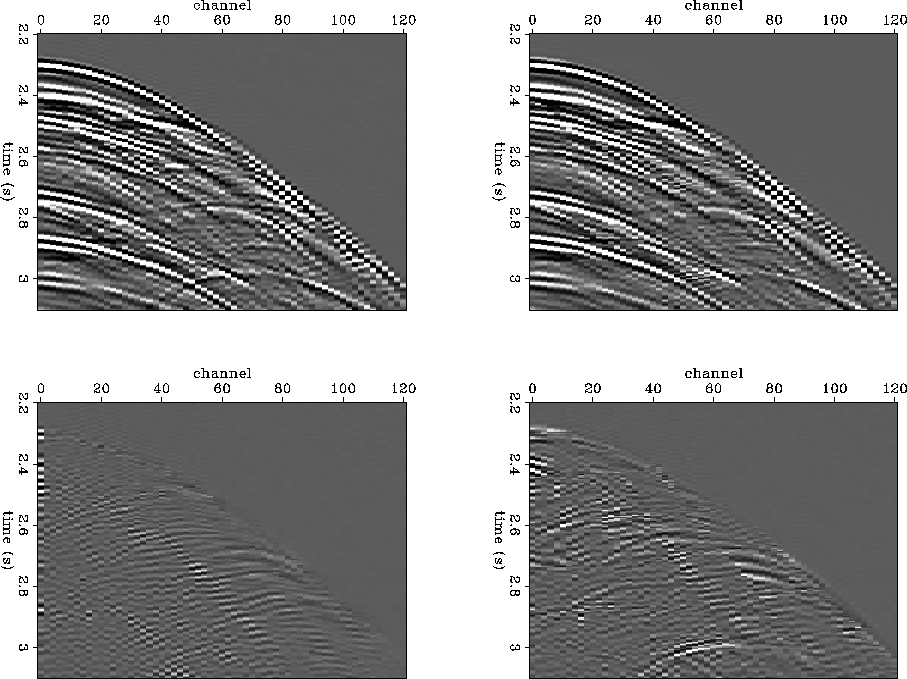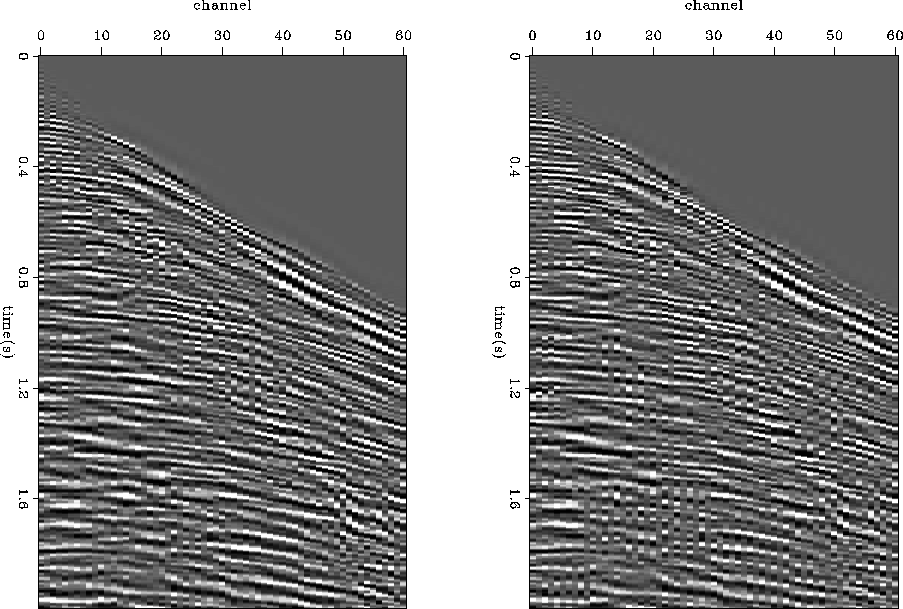




Next: CONCLUSION
Up: Radial smoothing
Previous: Smoothing pixels versus smoothing
Using the weblike pattern seen in Figure curtSmear8,
it is often possible to use fairly large micropatches.
An alternative to radial smoothing may be to simply lengthen
the micropatches in the radial direction, and not bother smoothing at all.
I test this in Figures smonosmo and smonosmo2.
It seems that smoothing may have some important effects beyond
just statistically compensating for the small size of a micropatch.
Even with very elongated patches, such that the area of a
patch is more than large enough for the number
of adjustable filter coefficients,
smoothing noticeably improves the final result, particularly
where the data have many dips or are noisy.
One possible explanation is that where the data are incoherent,
the change in a particular filter coefficient at each iteration
is just an average of data samples, which is approximately zero.
With the addition of the smoother, the change in nearby filter coefficients
fills in.
smonosmo
Figure 3 Noise-free interpolated traces and difference
from original data.
Traces were interpolated with PEF smoothing on the left, without on the right.
Known data is not shown, to make the differences easier to see.
The results are similar, but the result with smoothing is better.





Figure smonosmo shows a section of noise-free data with many dips,
interpolated with PEF smoothing on the left and without on the right.
The top two panels show the interpolated traces (the known input traces
are windowed out).
The bottom two panels show the differences between the interpolated traces
and the original traces which were thrown out to make the input.
The two panels are similar, though the left side is noticeably better
on some events.
smonosmo2
Figure 4 Noisy interpolated traces and differences.
Traces were interpolated with PEF smoothing on the left, without on the
right. Differences are more visible here on noisy data than
on noise-free data.
Traces interpolated without PEF smoothing abruptly change from
coherent to incoherent along certain micropatch boundaries.





Figure smonosmo2 shows two more interpolation results.
In this case the data is land data, and much noisier.
Both known and interpolated traces are shown. Because the
data is somewhat noisy, it is easier to
distinguish between the coherency of the two panels than
picking out differences between particular events.
The result using PEF smoothing, in the left panel, is noticeably
more coherent, particularly between 1.2 and 1.6 seconds.





Next: CONCLUSION
Up: Radial smoothing
Previous: Smoothing pixels versus smoothing
Stanford Exploration Project
4/27/2000

